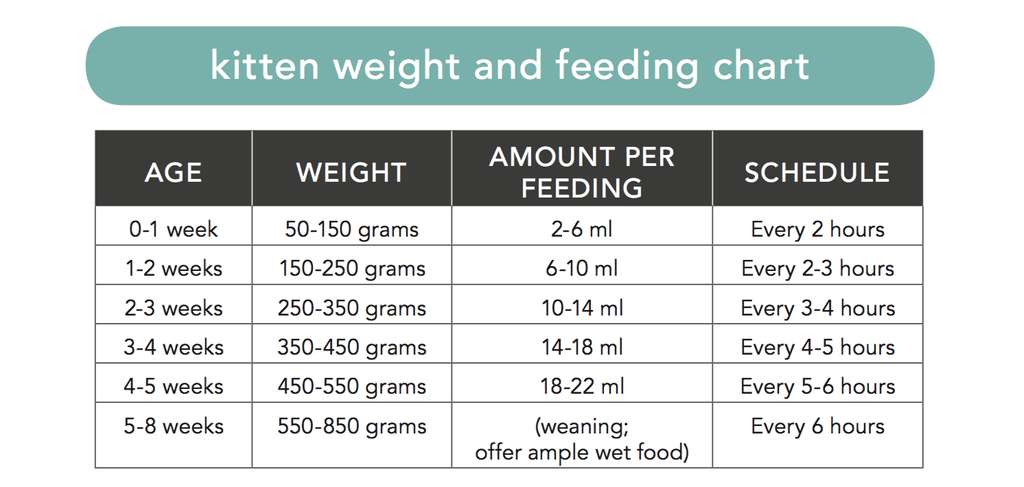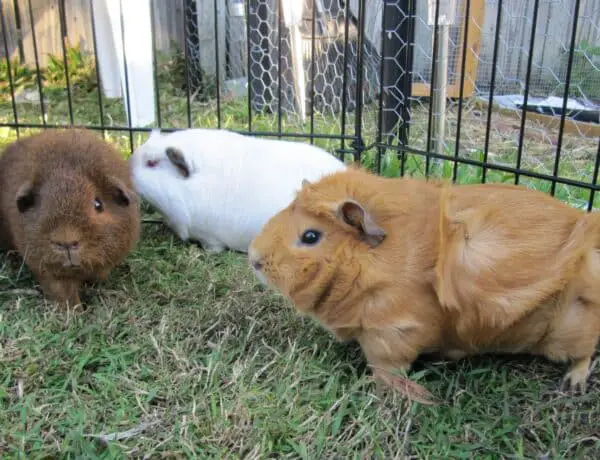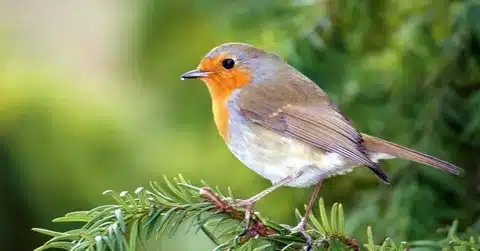Introduction
Feeding your cat the right amount of food is crucial for their overall health and well-being. Just like humans, cats require a balanced diet to ensure they receive all the necessary nutrients to thrive. However, determining the appropriate amount of food to feed your cat can be a bit challenging, as it depends on various factors such as their age, weight, activity level, and overall health.
Understanding your cat’s nutritional needs
Before diving into the specifics of how much food to feed your cat, it’s important to understand their nutritional needs. Cats are obligate carnivores, which means they require a diet primarily consisting of animal protein. Unlike dogs, cats cannot produce certain essential nutrients on their own, such as taurine and arachidonic acid, which are found in animal tissues. Therefore, it’s crucial to provide them with a diet that includes high-quality animal-based protein sources.
In addition to protein, cats also require other essential nutrients such as fats, carbohydrates, vitamins, and minerals. These nutrients play a vital role in maintaining their overall health, supporting their immune system, promoting healthy skin and coat, and ensuring proper growth and development. Therefore, it’s important to choose a cat food that is specifically formulated to meet their nutritional needs.

How much food should a cat eat per day
When it comes to feeding our feline friends, it’s important to strike the right balance. Feeding a cat too much can lead to obesity and health problems, while not providing enough food can leave them malnourished. So, how much food should a cat eat per day?
The answer to this question depends on several factors, including the cat’s age, weight, activity level, and overall health. Kittens, for example, require more calories than adult cats because they are still growing and developing. Similarly, a highly active cat will need more food than a sedentary one. It’s important to consult with your veterinarian to determine the appropriate amount of food for your specific cat.
One way to determine how much food to feed your cat is to follow the guidelines provided on the cat food packaging. These guidelines typically recommend a certain amount of food based on the cat’s weight. However, it’s important to remember that these are just general recommendations and may not be suitable for every cat. Some cats may require more or less food depending on their individual needs.
Another method to determine the right amount of food for your cat is to monitor their body condition. A cat at a healthy weight should have a visible waistline and be able to feel their ribs with a slight layer of fat covering them. If your cat is overweight, you may need to reduce their food intake. On the other hand, if your cat is underweight, you may need to increase their food intake or switch to a higher-calorie diet.
It’s also important to consider the type of food you are feeding your cat. Wet food typically contains more water and can help keep your cat hydrated, while dry food is more calorie-dense. Some cat owners choose to feed a combination of wet and dry food to provide a balanced diet. Again, consulting with your veterinarian can help you determine the best type and amount of food for your cat.
How much food should I feed my cat calculator?
Feeding your cat the right amount of food is crucial for their overall health and well-being. However, determining the correct portion size can be a bit challenging, as it depends on various factors such as the cat’s age, weight, activity level, and overall health. To make this task easier, you can use a cat food calculator to determine the appropriate amount of food to feed your feline friend.
A cat food calculator is a handy tool that helps you calculate the ideal portion size for your cat based on their specific needs. It takes into account factors such as the cat’s age, weight, and activity level to provide you with an accurate estimate of how much food your cat should be consuming. This ensures that your cat is getting the right amount of nutrients without overeating or being underfed.
When using a cat food calculator, you will typically need to input your cat’s weight, age, and activity level. The calculator will then generate a recommended portion size based on these factors. It’s important to note that the portion size provided by the calculator is just a starting point, and you may need to adjust it based on your cat’s individual needs.
It’s also worth mentioning that the type of food you feed your cat can affect the portion size. Dry cat food tends to be more calorie-dense than wet cat food, so cats may require smaller portions of dry food compared to wet food. Additionally, if you are feeding your cat a specialized diet, such as a weight management or prescription diet, it’s best to consult with your veterinarian for guidance on portion sizes.
How much often should I feed my cat?
Feeding your cat is an essential part of being a responsible pet owner. It is important to provide your feline friend with the right amount of food to ensure their health and well-being. However, determining how often to feed your cat can be a bit tricky. The frequency of feeding depends on various factors such as age, weight, and overall health of your cat.
For kittens: Kittens have smaller stomachs and higher energy needs compared to adult cats. Therefore, they require more frequent meals. It is recommended to feed kittens 3-4 times a day until they are around 6 months old. This helps them meet their nutritional requirements and supports their growth and development.
For adult cats: Once your cat reaches adulthood, you can transition to feeding them 2-3 meals a day. This allows them to maintain a healthy weight and prevents overeating. However, if your cat has specific dietary needs or health conditions, it is best to consult with your veterinarian for personalized feeding recommendations.
For senior cats: As cats age, their metabolism slows down, and they may become less active. This means they require fewer calories and may benefit from smaller, more frequent meals. It is generally recommended to feed senior cats 2-3 meals a day, but again, it is important to consider their individual needs and consult with your vet.
Free-feeding vs. scheduled feeding: Some cat owners choose to free-feed their cats, which means leaving food out all day for them to graze on. While this may work for some cats, it can lead to overeating and obesity in others. Scheduled feeding, where you provide meals at specific times, can help control portion sizes and prevent weight gain. It also allows you to monitor your cat’s appetite and detect any changes in their eating habits.
How much should a 5kg cat eat?
A 5kg cat should eat an appropriate amount of food to maintain a healthy weight and meet its nutritional needs. The amount of food a cat needs can vary depending on factors such as age, activity level, and overall health. It is important to provide a balanced diet that includes all the necessary nutrients for a cat’s well-being.
When determining how much food to feed a 5kg cat, it is recommended to follow the feeding guidelines provided by the cat food manufacturer. These guidelines are typically based on the cat’s weight and can give you a general idea of how much food to offer. However, it is important to remember that these guidelines are just a starting point and may need to be adjusted based on your cat’s individual needs.
It is also important to consider the type of food you are feeding your cat. Dry cat food tends to be more calorie-dense than wet cat food, so smaller portions may be needed. Additionally, if you are feeding your cat a homemade or raw diet, it is important to consult with a veterinarian or a feline nutritionist to ensure that your cat is receiving all the necessary nutrients.
Another factor to consider when determining how much to feed a 5kg cat is the cat’s activity level. If your cat is highly active and burns a lot of calories, it may require more food to maintain its weight. On the other hand, if your cat is less active or overweight, it may need fewer calories to prevent weight gain.
Monitoring your cat’s weight and body condition is crucial in determining if you are feeding the right amount. If your cat is gaining weight, it may be necessary to reduce the portion size. Conversely, if your cat is losing weight or appears thin, it may be necessary to increase the amount of food offered.
How much should a 7kg cat eat a day?
A 7kg cat should eat approximately 200-250 grams of food per day. However, it is important to note that the specific amount of food a cat needs can vary depending on factors such as age, activity level, and overall health. It is always best to consult with a veterinarian to determine the appropriate amount of food for your cat.
Feeding a cat the right amount of food is crucial for maintaining their overall health and well-being. Overfeeding can lead to obesity, which can increase the risk of various health issues such as diabetes, heart disease, and joint problems. On the other hand, underfeeding can result in malnutrition and weight loss.
When determining how much food to feed your 7kg cat, it is important to consider their energy needs. Cats are obligate carnivores, which means they require a diet that is high in animal protein. Commercial cat foods typically provide feeding guidelines based on the cat’s weight and activity level.
It is recommended to divide the daily food portion into multiple small meals throughout the day to mimic a cat’s natural feeding behavior. This can help prevent overeating and promote better digestion. Additionally, providing fresh water at all times is essential to keep your cat hydrated.
Keep in mind that the feeding guidelines provided on cat food packaging are just a starting point. Each cat is unique, and their individual needs may vary. It is important to monitor your cat’s body condition and adjust their food intake accordingly. If your cat is gaining weight, you may need to reduce their food portion. Conversely, if your cat is losing weight or appears hungry, you may need to increase their food portion.
What is the recommended amount of feed for a cat according to the chart?
According to the chart, the recommended amount of feed for a cat varies depending on its weight. For example, a cat weighing 5 pounds should be fed approximately 1/4 to 1/2 cup of dry food per day, while a cat weighing 10 pounds should be fed 1/2 to 3/4 cup of dry food per day. It is important to note that these are general guidelines and may need to be adjusted based on the cat’s activity level, metabolism, and overall health.
The chart also provides recommendations for feeding canned or wet food. For a 5-pound cat, the recommended amount is approximately 1/4 to 1/3 of a 6-ounce can per day, while a 10-pound cat should be fed 1/2 to 2/3 of a 6-ounce can per day. Again, these are general guidelines and may need to be adjusted based on the individual cat’s needs.
It is important to consult with a veterinarian to determine the appropriate amount of feed for your specific cat. Factors such as age, breed, and any underlying health conditions can also influence the recommended feeding portion. Additionally, it is crucial to monitor your cat’s weight and body condition regularly and make adjustments to the feeding portion as needed to ensure they maintain a healthy weight.
How can I determine the appropriate feeding portion for my cat using the chart?
Using the chart to determine the appropriate feeding portion for your cat is a straightforward process. First, you need to identify your cat’s weight. This can be done by weighing your cat on a scale or consulting with your veterinarian. Once you have the weight, locate the corresponding weight range on the chart.
Next, look for the recommended daily feeding amount for your cat’s weight range. This will typically be listed in either cups or grams. It’s important to note that the recommended feeding amount is usually based on the cat’s ideal weight, so if your cat is overweight or underweight, you may need to adjust the portion accordingly.
Additionally, it’s essential to consider your cat’s activity level and metabolism. If your cat is more active or has a faster metabolism, they may require a slightly larger portion to maintain their energy levels. On the other hand, if your cat is less active or has a slower metabolism, they may need a smaller portion to prevent weight gain.
Are there any specific guidelines or instructions provided in the chart for feeding a cat?
Yes, the chart provides specific guidelines and instructions for feeding a cat. It takes into consideration the cat’s weight and provides recommended feeding portions based on that. The chart is divided into different weight categories, such as 5-9 pounds, 10-14 pounds, and 15-19 pounds, with corresponding feeding portions for each category. This allows cat owners to easily determine the appropriate amount of feed for their cat based on its weight.
In addition to weight-based guidelines, the chart also provides instructions on how to transition a cat to a new food. It recommends gradually introducing the new food by mixing it with the old food over a period of 7-10 days. This gradual transition helps prevent digestive upset and allows the cat to adjust to the new food more easily.
Furthermore, the chart includes a note about the importance of providing fresh water at all times. It reminds cat owners to ensure that their cats have access to clean and fresh water throughout the day. This is essential for maintaining proper hydration and overall health.
Does the chart include information on different types of cat food or only a specific brand?
The chart provides information on different types of cat food, rather than just a specific brand. It takes into account the nutritional needs of cats and offers recommendations for various types of cat food, such as dry kibble, wet food, and raw diets. This allows cat owners to choose the type of food that best suits their cat’s preferences and dietary requirements.
In addition to the different types of cat food, the chart also includes information on specific ingredients to look for or avoid in cat food. It highlights the importance of high-quality protein sources, such as chicken or fish, and advises against artificial additives or fillers. This helps cat owners make informed decisions when selecting cat food and ensures that their cats receive a balanced and nutritious diet.
Overall, the chart provides a comprehensive guide to feeding cats, taking into account different types of cat food and specific nutritional considerations. It empowers cat owners to make educated choices about their cat’s diet, promoting their health and well-being.
Can the chart be customized based on the cat’s age, weight, or any other factors?
Yes, the chart can be customized based on the cat’s age, weight, and other factors. The recommended amount of feed for a cat may vary depending on these factors, as different cats have different nutritional needs. For example, a growing kitten may require more food compared to an adult cat, while an overweight cat may need to be fed less to help with weight management.
By taking into account the cat’s age, weight, and any other relevant factors, the chart can provide more accurate feeding guidelines. This customization ensures that the cat receives the appropriate amount of food to maintain a healthy weight and meet its nutritional requirements. It is important to consult the chart and adjust the feeding portion accordingly to ensure the cat’s well-being.

Conclusion
Understanding how much to feed a cat is essential for their overall health and well-being. By following a feeding chart and considering factors such as age, weight, and activity level, cat owners can ensure that their feline companions receive the appropriate amount of food to maintain a healthy weight and prevent obesity. It is important to note that these feeding guidelines are general recommendations and may need to be adjusted based on individual cat’s needs and preferences.
Additionally, it is crucial to choose high-quality cat food that meets the nutritional requirements of cats. This includes providing a balanced diet that includes the right amount of protein, fats, carbohydrates, vitamins, and minerals. Cat owners should also be mindful of the ingredients in the cat food and avoid those that may be harmful or cause allergies in their pets.
Furthermore, it is important to establish a feeding routine and stick to it. Cats thrive on consistency and having a regular feeding schedule can help prevent overeating or underfeeding. It is also recommended to provide fresh water at all times and monitor the cat’s water intake, as dehydration can lead to various health issues.





No Comments